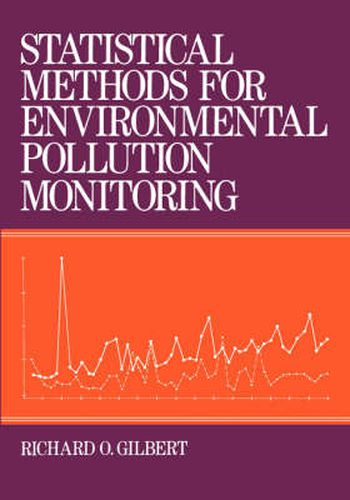Readings Newsletter
Become a Readings Member to make your shopping experience even easier.
Sign in or sign up for free!
You’re not far away from qualifying for FREE standard shipping within Australia
You’ve qualified for FREE standard shipping within Australia
The cart is loading…






This book discusses a broad range of statistical design and analysis methods that are particularly well suited to pollution data. It explains key statistical techniques in easy-to-comprehend terms and uses practical examples, exercises, and case studies to illustrate procedures. Dr. Gilbert begins by discussing a space-time framework for sampling pollutants. He then shows how to use statistical sample survey methods to estimate average and total amounts of pollutants in the environment, and how to determine the number of field samples and measurements to collect for this purpose. Then a broad range of statistical analysis methods are described and illustrated. These include: * determining the number of samples needed to find hot spots* analyzing pollution data that are lognormally distributed* testing for trends over time or space* estimating the magnitude of trends* comparing pollution data from two or more populations New areas discussed in this sourcebook include statistical techniques for data that are correlated, reported as less than the measurement detection limit, or obtained from field-composited samples. Nonparametric statistical analysis methods are emphasized since parametric procedures are often not appropriate for pollution data. This book also provides an illustrated comprehensive computer code for nonparametric trend detection and estimation analyses as well as nineteen statistical tables to permit easy application of the discussed statistical techniques. In addition, many publications are cited that deal with the design of pollution studies and the statistical analysis of pollution data. This sourcebook will be a useful tool for applied statisticians, ecologists, radioecologists, hydrologists, biologists, environmental engineers, and other professionals who deal with the collection, analysis, and interpretation of pollution in air, water, and soil.
$9.00 standard shipping within Australia
FREE standard shipping within Australia for orders over $100.00
Express & International shipping calculated at checkout
This book discusses a broad range of statistical design and analysis methods that are particularly well suited to pollution data. It explains key statistical techniques in easy-to-comprehend terms and uses practical examples, exercises, and case studies to illustrate procedures. Dr. Gilbert begins by discussing a space-time framework for sampling pollutants. He then shows how to use statistical sample survey methods to estimate average and total amounts of pollutants in the environment, and how to determine the number of field samples and measurements to collect for this purpose. Then a broad range of statistical analysis methods are described and illustrated. These include: * determining the number of samples needed to find hot spots* analyzing pollution data that are lognormally distributed* testing for trends over time or space* estimating the magnitude of trends* comparing pollution data from two or more populations New areas discussed in this sourcebook include statistical techniques for data that are correlated, reported as less than the measurement detection limit, or obtained from field-composited samples. Nonparametric statistical analysis methods are emphasized since parametric procedures are often not appropriate for pollution data. This book also provides an illustrated comprehensive computer code for nonparametric trend detection and estimation analyses as well as nineteen statistical tables to permit easy application of the discussed statistical techniques. In addition, many publications are cited that deal with the design of pollution studies and the statistical analysis of pollution data. This sourcebook will be a useful tool for applied statisticians, ecologists, radioecologists, hydrologists, biologists, environmental engineers, and other professionals who deal with the collection, analysis, and interpretation of pollution in air, water, and soil.